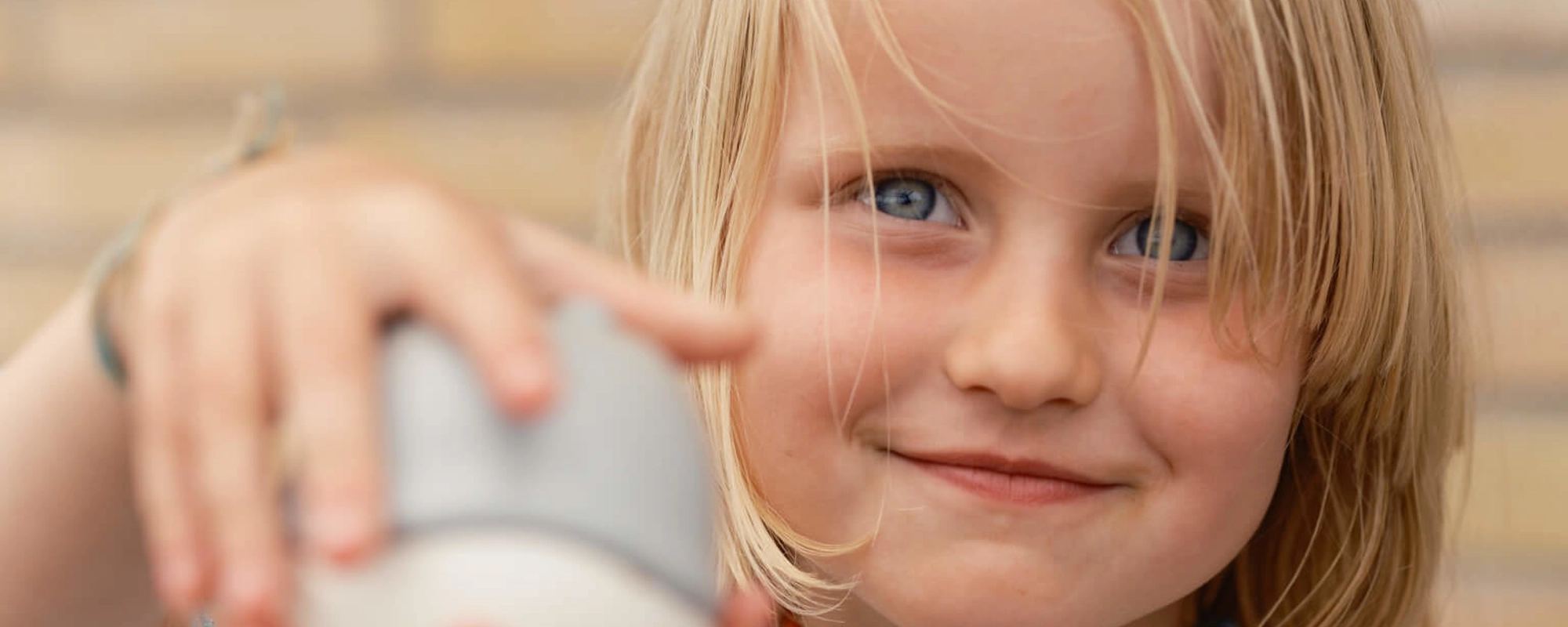“Being a parent is difficult and you are not given training to be one, so I think every parent should have access to these tools.”
Father of a 5-year-old and a 10-year-old.
iiP for Parents and Teachers

Who is invest in play® for?
The invest in play® (iiP) Parent Programme is for any parent or caregiver that wishes to build an even better foundation for their child and family’s lives. Over fifty years of research on parent and teacher training has produced a wealth of information about effective prevention and treatment for reducing children’s challenging behaviours and increasing their wellbeing, for both neurodiverse and neurotypical children.
iiP programmes use these proven strategies in the Six Bricks for Kids model. Parents and caregivers receive support to:
- Manage their own strong emotions.
- Increase parents' self-confidence.
- Play and spend time with their children in ways that increase attachment.
- Support children's learning and social skills, and their emotion regulation.
- Increase children's co-operation with household tasks.
- Set limits in a collaborative manner so that children feel safe and secure.
- Respond to children's strong emotions in a way that ensures safety and supports emotion regulation for both parents and children.
- Deal with life circumstances that make it more difficult to parent (e.g. job or housing insecurity, divorce, moving to a new country).
- Help children who are temperamentally intense or who are neurodiverse (e.g. ADHD or autism).
Supporting children's wellbeing, social skills development and emotional resilience is an important goal for all parents and caregivers. For many families, this means learning effective strategies to respond to the ups and downs of children's typical development. For children with intense temperaments, or who are neurodivergent, parents might need additional information and strategies to support their children's wellbeing and navigate challenges.
What works?
Supporting both a neurotypical or neurodiverse child can be a difficult and complex parent or teacher task.
However, research on parent and teacher training has produced a wealth of information about effective prevention and treatment for reducing children’s challenging behaviours and increasing wellbeing and social emotional resilience in both neurodiverse and neurotypical children.
These interventions are recommended in the national guidelines as the most effective interventions in many countries.
Learn more about the invest in play parent and teacher interventions and how to get trained in the programmes.
Teacher Programme
Those who educate and care for children aged 2-12 years of age have an awesome and daunting task. Educators/teachers are the people that children spend most of their time with, outside of their families. They are expected to be responsible for student’s academic, social and emotional development as well as their physical health and safety.
Almost all teachers and educators enter the profession because they want to make a difference in children’s lives; and they do that, in multiple ways every day. It is also true that it is often exhausting to try to meet all these needs, especially in under-resourced schools, with students who come to school with many needs. Consequently, rates of teacher burnout are high.
The iiP Teacher Programme will support teachers to use evidence-based strategies that increase children’s social emotional well-being in the classroom, following a Six Bricks for Kids model parallel to that used in the parent programme. The teacher programme will also explore the teacher-child relationship with practical information on understanding children’s needs, wants, feelings and behaviours. It will provide strategies that have been highly researched and are proven to work to create strong student-teacher bonds as well as set appropriate and safe limits so that children can learn and thrive. These approaches will strengthen the social community as a whole as well as provide insight into how to understand and respond to the needs of individual neurodiverse children.

Neurodiversity
Both neurodiverse and neurotypical individuals think and behave in ways that are valid ways of being in the world.
People with ADHD and who are autistic are sometimes described as neurodiverse. This means that they have brains that develop in ways that cause them to think, perceive and behave differently than the general population. Neurotypical is the word used to describe individuals whose brains function in ways that are like the majority of the general population.
Both neurodiverse and neurotypical individuals think and behave in ways that are valid ways of being in the world. Unfortunately, school and home environments, and expectations, are often set up to accommodate neurotypical individuals, so it can be much harder for people with ADHD or who are autistic to get along in these environments. This can lead people to think that having ADHD or being autistic is a problem or condition that needs to be fixed.
A different understanding, is that it is part of who the child is. If we try to eliminate the ADHD or autism, we would be trying to get rid of a core part of the child’s personality or temperament, and the child would be a different person. It is important to remember that having ADHD or being autistic also comes with many strengths.

ADHD
Children with ADHD are often smart, creative, funny, brave, willing to take risks, empathic and tenacious.
The words, Attention Deficit Hyperactivity Disorder, make up the official diagnosis for ADHD. These words focus alone on the difficulties that ADHD brings, and they tell part of the story for a child with ADHD and their family.
It is true that children with ADHD usually have difficulties concentrating, staying on task and focusing. They may seem easily distracted, move quickly from one activity to another, be seen as noisy and highly active, and have difficulty remembering and following directions or completing tasks. Often it is hard for children with ADHD to pay attention or follow directions. These characteristics may lead to difficulties at home, at school and with peers.
Each child with ADHD is unique, just like any other child, and as a parent, caregiver, or teacher, you will be intimately familiar with the challenges that the child experiences as well as the difficulties you and others in their world may experience in trying to support them.
But having ADHD also comes with strengths and benefits. Children with ADHD are often smart, creative, funny, brave, willing to take risks, empathic and tenacious. People with ADHD can often focus intensely on things that are of high interest for them – we call this hyperfocus. They may be very observant and may have an excellent memory for details and facts. They are often able to see unconventional solutions to problems or puzzles.

Autism
Being autistic comes with strengths and possibilities. Some autistic people have strengths in visual learning, long term memory and logical thinking.
Autism is not a single or simple condition, and we are learning new things about it all the time. Autistic people’s brains develop in ways that can cause them to think, perceive and behave differently than non-autistic people. Because of this we say that autism is a neurodevelopmental condition.
Autistic people usually communicate and interpret social interactions differently than non-autistic people. Other common traits are having strong and persistent interests, engaging in repetitive behaviours or having different responses to sensory input than neurotypical people. Each trait occurs on a spectrum, meaning that each autistic person has different amounts of each trait and these vary over time and situation.
Autistic people have a range of cognitive ability, just like neurotypical people. Some have significant cognitive delays, others are in the ‘typical’ range, and some are cognitively gifted. Some autistic children use minimal verbal language and others may use advanced language at an early age. Some autistic children participate fully in most home and school activities with some extra support, and some autistic children require more specialised support across many areas. Some autistic children grow up to live independently and others will always need caregiver support. The amount of support each autistic person needs may vary across different settings, situations and times of their lives.
Being autistic comes with strengths and possibilities. Some autistic people have strengths in visual learning, long term memory and logical thinking. Some are good at understanding and working with rules and paying attention to detail. Some can focus intently and learn a lot about things that interest them. Some find pleasure in doing repetitive but important tasks that non-autistic people would find tedious. Some have a strong sense of justice and may be honest and punctual. Not all these things are true for all autistic people. Just as non-autistic people have a mixture of strengths and challenges, so do autistic people.


